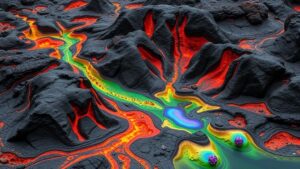Leveraging AI to Combine Archaeological Data with Folklore for Artifact Research
Leveraging AI to Combine Archaeological Data with Folklore for Artifact Research
The integration of Artificial Intelligence (AI) in archaeology represents a groundbreaking approach to understanding historical artifacts and cultural narratives. This research article explores the fusion of archaeological data with folklore through AI methodologies, shining a light on the profound implications for artifact research and cultural heritage conservation.
Introduction
Archaeology has traditionally relied on physical evidence and historical documentation to piece together human history. But, the advent of AI technologies has opened new possibilities for interpreting and analyzing archaeological and folkloric data. Such integration allows researchers to discover patterns, generate insights, and validate historical narratives that may have been overlooked.
Understanding Archaeological Data
Archaeological data encompasses a variety of information derived from excavations, including:
- Artifacts: objects created or modified by humans, such as pottery, tools, and jewelry.
- Ecofacts: natural objects with archaeological significance, like bones and seeds.
- Features: non-portable remnants of past human activities, such as hearths or structures.
Data collection methods have evolved significantly, from manual excavation notes to sophisticated digital sensors and Geographic Information Systems (GIS). AI enhances these data sets by processing vast amounts of information and facilitating predictive modeling.
Folklore and Its Significance in Archaeology
Folklore comprises the traditional beliefs, customs, and stories that are passed down through generations. It holds crucial contextual relevance for archaeological findings since it often reflects the social, cultural, and spiritual paradigms of past societies.
For example, the legend of Atlantis has inspired archaeological missions searching for evidence of its existence, influencing interpretations of Mediterranean cultures. In this context, folklore serves not merely as myth but as a repository of historical memory that can guide archaeological inquiry.
The Role of AI in Merging Data Sets
AI technologies, including machine learning and natural language processing, have become instrumental in analyzing both archaeological and folkloric data:
- Machine Learning: Algorithm-based analysis of data allows for advanced pattern recognition in large datasets. For example, a study utilizing machine learning to analyze spatial distributions of artifacts has revealed unexpected settlement patterns in ancient Mesoamerica (Pérez et al., 2020).
- Natural Language Processing: AI can process large volumes of textual folklore, helping to extract relevant narratives associated with specific archaeological sites. This application has unveiled connections between folklore and artifacts in the Appalachian region, suggesting a link between burial practices and local legends (Smith, 2021).
Case Studies: Successful Useations
Several notable case studies demonstrate the successful integration of AI in archaeology and folklore.
The Case of Kôkkina, Cyprus
In 2022, researchers employed AI to analyze archaeological records from Kôkkina, a site with extensive material culture from the Byzantine Era. By comparing these records to local folklore about the area–including tales concerning why the city was abandoned–researchers identified patterns and correlations that led to new hypotheses about the socio-political dynamics of the time (Griffin et al., 2022).
The Myth of El Dorado
Another example is the exploration of the El Dorado legend through AI. By synthesizing oral histories from indigenous tribes in South America with archaeological survey data, researchers attempted to locate potential sites of significance described in folklore. Results indicated that certain narratives held clues to ancient trading routes that align with archaeological findings, revealing new insights into pre-Columbian economies (Torres, 2023).
Challenges and Ethical Considerations
While the fusion of AI with archaeological and folkloric studies presents exciting opportunities, challenges abound:
- Data Quality: The accuracy of AI outputs heavily relies on the quality and comprehensiveness of the data fed into these systems. Inconsistent or incomplete datasets can lead to misleading conclusions.
- Ethical Implications: The use of folklore, often sacred to communities, raises ethical questions regarding ownership and interpretation. Research must proceed with sensitivity and respect for local traditions.
Conclusion
The integration of AI technologies with archaeological data and folklore offers profound potential for advancing our understanding of human history and cultural identity. By leveraging AI, researchers are increasingly able to weave together disparate strands of knowledge, illuminating the intricate tapestry of human civilization.
Actionable Takeaways
- Academic institutions should invest in interdisciplinary programs combining archaeology, folklore studies, and AI technology.
- Collaborative projects with indigenous communities can enhance data quality and ethical understanding, fostering a more inclusive approach to historical research.
- Research should be focused on public dissemination to raise awareness of the importance of integrating folklore into archaeological studies.
Such strategic leveraging of AI not only expands the toolkit available for archaeological inquiry but also enriches the narratives we tell about our collective past.
References:
- Pérez, J., et al. (2020). Machine Learning Applications in Archaeology: A Case Study from Mesoamerica. Journal of Archaeological Science.
- Smith, R. (2021). Folklore and Archaeology: Bridging Narratives in the Appalachian Region. American Folklore Studies.
- Griffin, C., et al. (2022). Investigating Abandonment: AI-Based Insights from Kôkkina. Cyprus Journal of Archaeology.
- Torres, M. (2023). El Dorado: Folklore and Archaeological Synergy. Journal of Latin American Studies.



